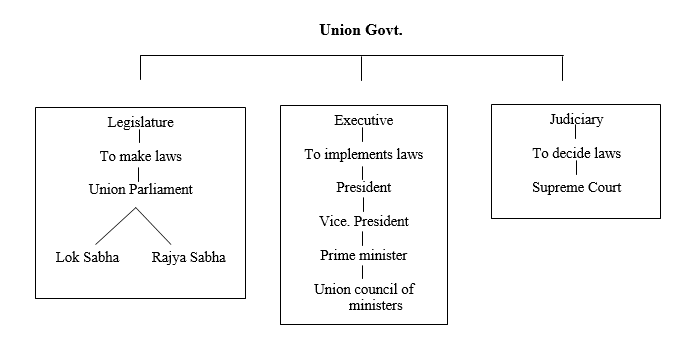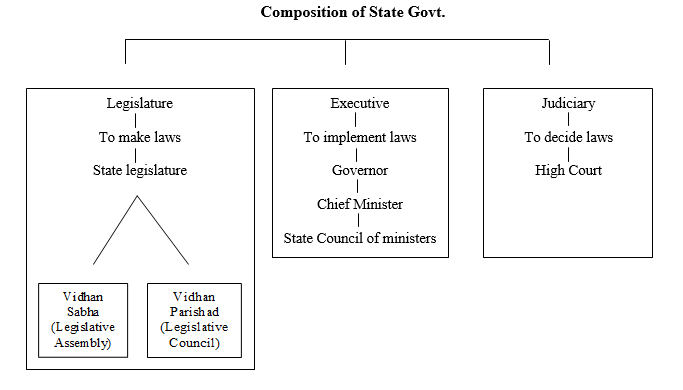Polity Notes
MEANING OF REPUBLIC AND GOVERNMENT
Meaning of Republic a Country is a republic where head of the state is not hereditary. Head of the state may be elected, military ruler, dictator, nazi, fascist, communist ruler but must not be Heriditory.
India – Head of the state – President – Nominal or symbolic head – Shri Ram Nath Kovind Head of the Govt. – Prime Minister – Real Head of the govt. – Shri Narendra Modi
Britain – Head of the State – British Monarch – Nominal or Symbolic Head – Queen Elizabeth II Head of the govt. – Prime Minister – Real Head of the govt – Mr. Boris Johnson
USA – Head of the State – President - Same Person is Head of State as well as Head of Govt
Head of the govt. – President (Mr Joseph Joe Biden)
British Monarch (Presently Queen Elizabeth II) is the head of the state of 16 countries e,g Jamaica, Barbados, Bahamas, Grenada, Australia, Canada, New Zealand etc. as well as of Britain.
India got independent on 15th Aug 1947 and then we were not a republic country.
Our head of the govt became our first prime minster Sh. J.L. Nehru & British King George VI was our head of the state. (British King) appointed Lord Mountbatten as his representative in India and was given designation as Governor General and his tenure was for the period 15-8-47 to 21-6-1948. Thereafter British King George VI appointed an Indian (Sh. Chakravorthy Rajgopalachari) as his representative in India and he served India as governor general for the period 21-6-1948 to 26-1-1950). So during the period 15-8-1947 to 26-1-1950, our head of the state used to be British Monarch & British Monarch is heriditory. So we were although an independent country but not republic. But from 26th Jan 1950, we switched from heriditory head of the state (British Monarch) to an elected head of the state (President of India) and our status converted from non-republic to a republic country. (because the post of Indian President is not heriditory. Any Indian citizen is eligible to be elected as President) That is why we became a republic country on 26th Jan 1950 and we do celebrate 26th Jan as our republic day every year.
Now Shri Ram Nath Kovind is our Head of the state & Narendra Modi is Head of the Govt.
Similarly Pakistan became an independent country on 14th Aug 1947 and M.A. Jinnah a representative of King George VI became Governor General whereas Liyakat Ali Khan became 1st Prime Minister (Head of the govt.) and British Monarch was head of the state. On 23rd march 1956, Pakistan switched from heriditory head of state to elected head of the state and became a Republic Country.
Pakistan became a Republic Country on 23rd March 1956 and Iskandar Mirza became 1st President of Islamic Republic of Pakistan.
Most of us relate Republic with Democracy but there is absolutely no connection between them e.g. China is a Republic Country but not democratic India is Republic as well as democratic Britain is not republic but democratic, Saudi Arabia neither republic nor democratic. These two are totally different terms.
Examples of Republic Countries India, Pakistan, Libya, Iran, Iraq, Syria, Afghanistan, Srilanka, Bangladesh, France, Germany etc.
Non Republic Countries, Britain, Japan, Saudi Arabia, Sweden, Spain, Australia, Canada, New Zealand, Bahamas, Barbados, Grenada etc.
Meaning of Government
Government is a composite body consisting of three organs Legislature, Executive & Judiciary

In India we have two types of govts.
(1) Union Government / Central Govt.
(2) State Govts.
We have one union govt. & 28 state govts.
We had 28 states. On 2/6/2014, Telangana state was created by dividing Andhra Pradesh state into two states – Andhra Pradesh & Telangana. Then total no of states became 29.
On 31/10/2019, The Jammu & Kashmir state was divided into two union territories – Union territory of Jammu & Kashmir and union territory of Ladakh. So now we have 28 states.
Similarly, we head 7 union territories. On 31/10/2019, the State of Jammu & Kashmir was divided into two union territories making the no of UT’s as 9.
On 25/1/2020, the two union territories, Union Territory of Dadar & Nagar Haveli and Union Territory of Daman & Diu were merged into one and the name of new UT was termed as Union Territory of Dadar & Nagar Haveli and Daman & Diu. Now total no of UT’s is 8.
Composition of Union Govt.


Important Points
Indian Constitution was adopted on 26th Nov 1949
Indian Constitution was implemented on 26th Jan 1950
Republic Day 26th Jan
Constitution Day 26th Nov
Last Viceroy of India Lord Mountbatten
1st Governor General of Independent India Lord Mountbatten
1st Indian Governor General of Independent India Rajgopalachari Chakaraborthy
1st President of India – Dr Rajendra Prasad
14th President of India – Ram Nath Kovind
1st PM of India – Pt. J.L. Nehru
15th P.M. of India – Narendra Modi
1st V.P. of India – Dr. S. Radhakrishnan
13th V.P. of India V. Naidu
Our Constitution was prepared by – Constituent Assembly.
1st Meeting of Constituent Assembly was held on 9th Dec 1946.
Last Meeting of Constituent Assembly was held on 24th Jan 1950.
Temporary Chairperson of Constituent Assembly. - Dr. Sachidanand Sinha
Chairperson of Constituent Assembly. - Dr Rajendra Prasad.
Vice Chairperson of Constituent Assembly. - H.C. Mookherjee
Advisor to Constituent Assembly. - B.N. Rau
Chairperson of Drafting Committee of Constitution. - Dr. Bhim Rao Ambedkar.
Dr. Rajendra Prasad was elected as first president of India by Constituent Assembly in its last meeting held on 24/1/1950. Thereafter Constituent Assembly was converted into Indian Parliament (more precisely Rajya Sabha).
Dr. Rajendra Prasad became first President of India on 26th Jan 1950.